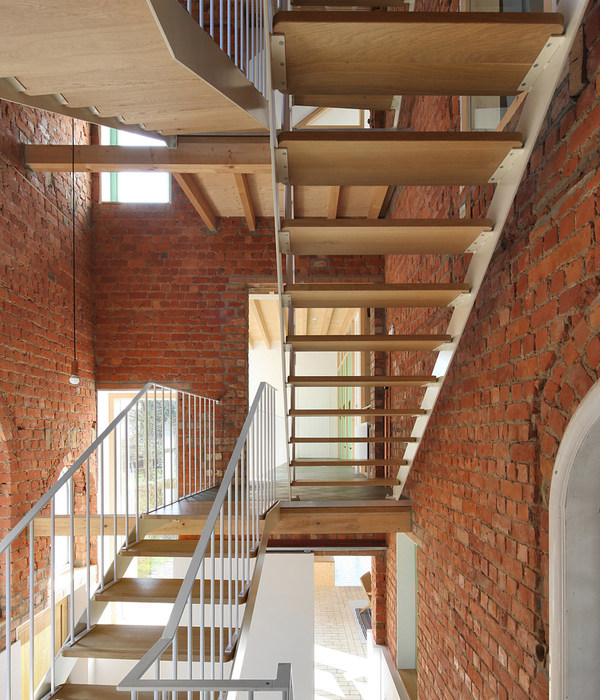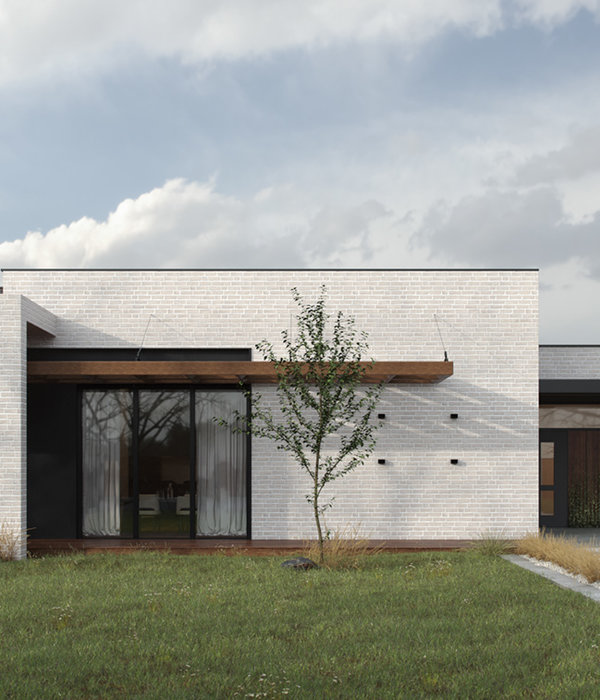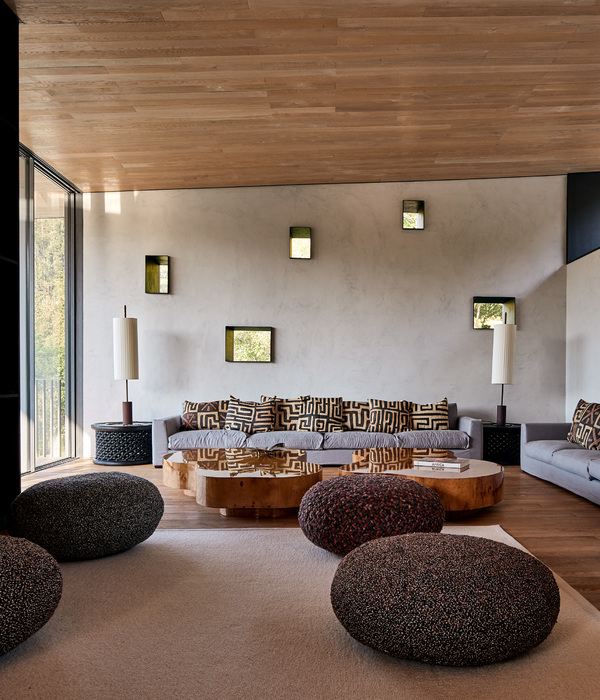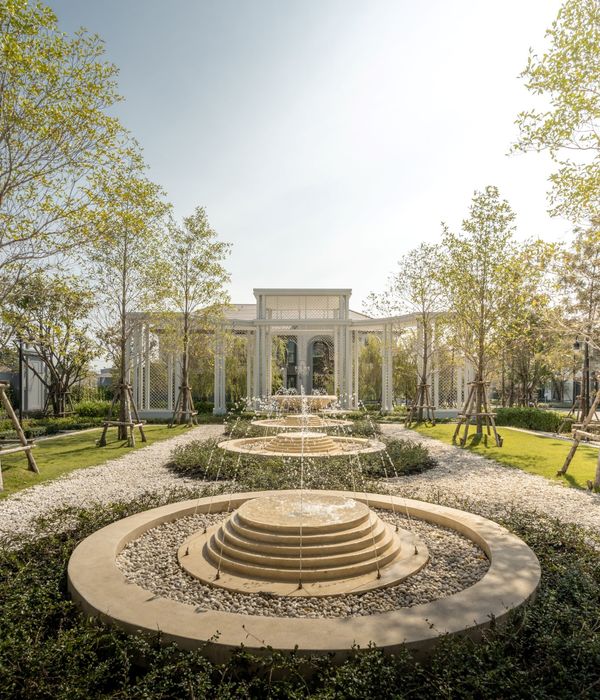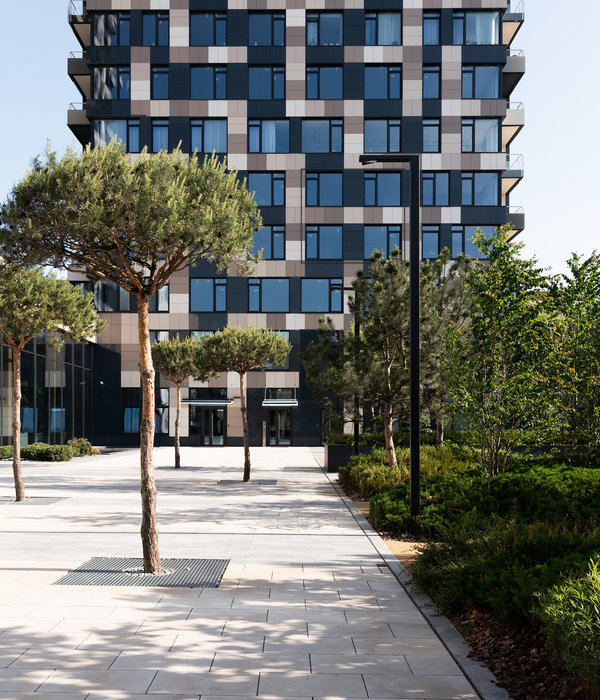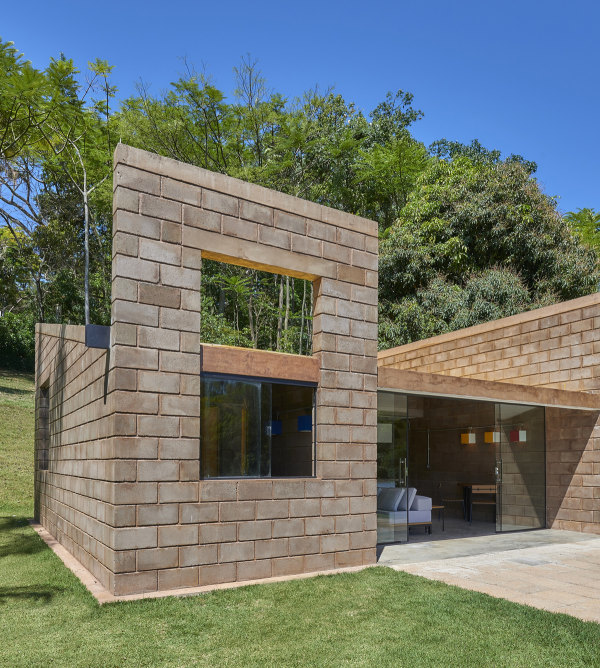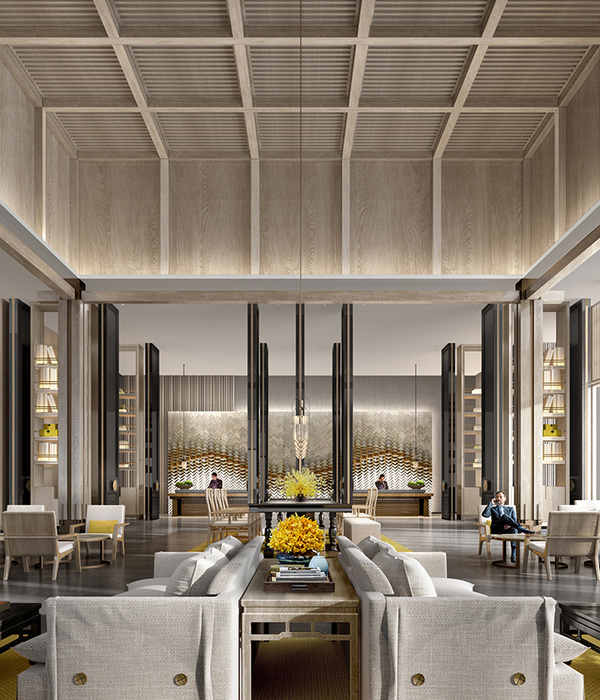Architects:TAO - Trace Architecture Office
Area:64700m²
Year:2022
Photographs:Hao Chen
Lead Architect:Li Hua
Design Team:Yu Liu, Xueshuang Leng, Langhuan Wang, Yakun Wang, Jiaqi Liu, Yuting Yang, Xinru Zhao, Wenjie Li, Ting Xu, Linyi Dai, Peiyi Liu, Yongyi Wu, Kai Gao, Ruoxin Li, Ziyuan Li, Wanyu Chen, Huiqing Gong, Yingli Liu, Xiang Li
Construction Agency:China Building Technique Group Co., Ltd.
Construction Drawing:IPPR(Hainan) Engineering Design & Research Institute Co., Ltd.
Secondary Mep Design:LV Jianjun and Kcalin design group
Lighting Design:z design and planning
Landscape Consultant:LD-S Design
Construction:Hunan No.6 Engineering Co., Ltd.
Client:Hainan Huandao Industrial Development Co. Ltd.
City:Haikou
Country:China
Text description provided by the architects. Trace Architecture Office (TAO)'s latest school project—Haikou Jiangdong Huandao Experimental School is currently in use. Located in Haikou, Hainan, China, the campus includes a high school and student dormitory for 48 high school classes, and a kindergarten for 18 kindergarten classes, with a total floor area of 64,700 square meters. This is TAO's second educational project in Haikou, which is another creative practice of exploring links between education and architecture with respect to the local context.
Miniaturized Landscape - The project is located in Jiangdong New District, east coast area of Haikou, which has a long coastline with rich landscape resources such as wetland parks and mangrove nature reserve, etc. The overall planning emphasizes the fundamental role of ecology, forming a spatial pattern that integrates urban and nature harmonically. The original site was an open wetland that was interspersed with water and green islands. The design regards the campus as a miniature garden city, responding to the surrounding environment in an organic form. The flowing curves are just like meandering rivers that converge into various lakes, enclosing courtyards between buildings; the undulating terrain forms hills, which serve as a continuous open space for outdoor group activities; the double-height columns like a deep forest, while the large roof as a floating cloud... The building integrates with the surrounding countryside area, green space, river, wetland, and ocean, being part of a unified whole.
Organic form - Meanwhile, the free curves and vivid colors, which echo the unique childlike innocence and playfulness, are aimed to evoke children’s imagination and creativity, making students a unique school experience. In the design of the high school, we hope to be liberated from the "fishbone" layout of the traditional school design and break the stereotype. Just like a puddle that spreads out from the center, a "radial" plan creates a dynamic space sequence and allows all programs to be connected by the shortest path, achieving efficient interconnection networks.
The overall architectural form seems to be composed of freehand curves, but in fact, it is controlled by precise geometric lines with sensibility and rationality, defining a free-flowing and yet powerful spatial form. Various circular arcs create many centripetal courtyards and arc-shaped spaces inwardly while forming flowing outdoor public spaces and an architectural image without angles or corners. Indoor and outdoor spaces flow into one another and are inter-nested, forming a labyrinth space in which pathways circulate and directionality keeps changing. It provides users with an exploratory and unique school experience.
Floating Roof - A large “floating” roof covers several independent teaching blocks, creating adequate shaded outdoor activity spaces for students. The building is elevated to open up the ground floor spaces, which allows visual and physical continuity. At the same time, it provides shading and protection against wind and rain and facilitates natural ventilation, which actively responds to the local tropical climate. The bridges and ramps at different heights, which seems to break free from the shackles of gravity, interwoven through the suspended solid volumes and column forest, together with the micro-topography landscape, depict a three-dimensional “garden of forking paths”.
In terms of the program, as the "heart" of the high school, the central zone is arranged with a multi-purpose event hall, library, lecture hall, and other public spaces. It not only connects different functional spaces such as teaching blocks, gymnasiums, canteen, and offices on different floors but also serves as a cohesive area for extracurricular activities and social interaction, bringing various everyday experiences to the students apart from attending classes. The suspended blue cube and red cylinder volume correspond to the multi-purpose event hall and exhibition hall respectively, which provide diversified public spaces for students on the upper floors without going downstairs during the short breaks. At the same time, the covered semi-open area also actively responds to the local tropical climate, providing shading and protection against intense heat as well as strong wind and rains.
The basketball gymnasium is a three-story high space with large-span structural beams, presenting structural aesthetics and a sense of strength. Light enters through gaps in-between the beams from the top, bringing sufficient natural light to the interior and also dematerializing the heaviness created by the concrete roof. Maple floor and wooden fiber sound-absorbing board with soft furnishings are used indoors to meet the acoustic and anti-collision requirements. The organic shape of the layout maximizes the internal circulation path and emphasizes directionality. Being in it, it is like sailing in the direction of light inside a giant ship. The canteen provides a two-story dining space. A ramp volume breaks in from the outside, like a foreign object landing in the center of the space. Suspended from the ceiling, together with the diffused natural light, it creates a sculptural and surreal atmosphere of floating. The architectural language of the dormitory building is consistent with that of the teaching blocks. The living spaces are organized around the courtyard, allowing each room to enjoy sufficient natural ventilation and light. The organic layout allows several different types of rooms to be proposed.
Different shading systems are adopted for each elevation according to the different orientations of intense sunlight. White and wood grain aluminum sun-shade panels are applied both horizontally and vertically in the south façade of the Teaching Block to enrich the façade as well as to weaken the volume visually, while the north side is dominated by horizontal sun shades. The canteen and the gymnasium are facing west, with denser vertical sunshades arranged, and the angle of the sunshades is optimized with consideration of the sun incidence direction on the summer solstice.
Color and light - Light activates color and space, endowing materials with different expressions. The 17-meter-high columns and the thousands-square-meter roof are all made of fair-faced concrete. Through the interplay of light and shadow, it outlines the rhythm of the space, creating a spiritual experience. The abstract geometric volumes are finished in colored texture paint—red is passionate, blue is calm, and yellow is lively—which makes the space to be full of drama and rich in emotion, like a beautiful and dynamic oil painting. The interior is illuminated by diffused daylighting through skylights, together with hues of the colors and shadows, it creates an overall spiritual and mystical balance, nourishing the soul and activating minds.
An infinite loop - The kindergarten is located on the southwest side of the campus with an independent entrance. With the limited space, we hope to create a place for children to run freely. Therefore, the design creates a loop of circulation, where levels of different heights are connected by various ramps, providing a homogeneous and continuous movement amid different levels of the building. The roof becomes an extension of the ground, while the center of the building—the staggered position of figure eight—becomes both the endpoint and starting point of the journey. The classrooms are designed with double-sided semi-open corridors. The outer one serves as the main circulation space; while the inner corridor is a combination of a flat floor and steps and faces the inner courtyard, forming a covered balcony for relaxation and communication. The middle layer of the building is elevated to open up more shaded outdoor activity space, which actively responds to the tropical climate of Hainan. Meanwhile, it also creates an angled intersection space that fits children’s body scale, which becomes a unique and exciting hotspot of fun and social interaction.
The kindergarten, teaching blocks, and dormitory building of the senior high school are connected as a whole via unified organic architectural language. Children run from the ground to the sky, from indoors to outdoors, and grow up freely on this borderless campus.
Project gallery
Project location
Address:Haikou, Hainan, China
{{item.text_origin}}

